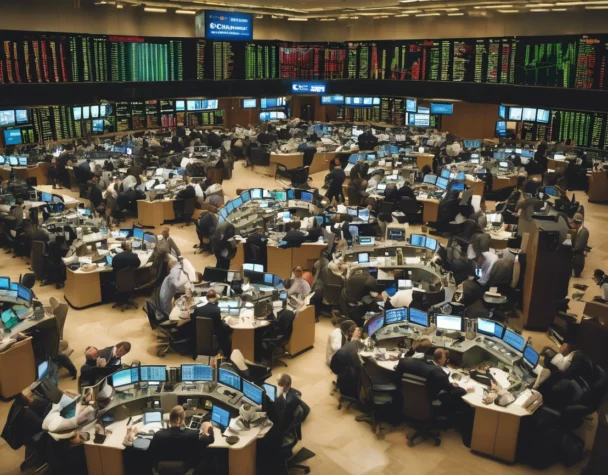
Exploring ETF Options to Track Market Volatility
Fri, March 07, 2025In the ever-fluctuating world of finance, Exchange-Traded Funds (ETFs) have emerged as pivotal tools for investors aiming to navigate market volatility. As markets swing between highs and lows, understanding and utilizing ETFs strategically can provide not only a safety net but also a platform for potential growth. This article delves into how these versatile instruments can be optimized during uncertain market conditions, offering a guide for both novice and seasoned investors.
Navigating Through Volatile Markets with ETFs
In the throes of market unpredictability, ETFs stand out due to their inherent flexibility and diversification benefits. Unlike individual stocks, ETFs encompass a wide array of assets, spreading out risk and minimizing the impact of a single security’s downturn. For instance, broad-market ETFs like the SPDR S&P 500 ETF Trust (SPY) allow investors to gain exposure to the market’s overall performance, rather than betting on individual stock movements. This approach is particularly advantageous during volatile periods when single stocks may be unpredictably hit by market dynamics. Additionally, ETFs are known for their liquidity, meaning they can be bought or sold during trading hours at prices close to their real-time market value, a crucial feature during high volatility when quick exits or entries are necessary.
Sector-specific ETFs also offer a strategic pathway for navigating market storms. By targeting specific sectors that may outperform during volatile periods, investors can potentially hedge against broader market downturns. For example, consumer staples or healthcare sectors often show resilience in economic downturns, and ETFs focusing on these sectors, such as the Consumer Staples Select Sector SPDR Fund (XLP) and the Health Care Select Sector SPDR Fund (XLV), can be prudent choices. The real-time adaptability of ETFs allows investors to shift focus swiftly in response to changing economic indicators, thereby optimizing their portfolios towards sectors showing strength.
Furthermore, volatility-focused ETFs like the iPath Series B S&P 500 VIX Short-Term Futures ETN (VXX) provide direct avenues for investors to capitalize on increased market volatility. These ETFs are designed to increase in value when market volatility rises, contrary to the typical market trend. Including such instruments in a portfolio provides an explicit counterbalance during turbulent times, although they require active management and a clear understanding of their unique behaviors and inherent risks.
ETF Strategies for Market Uncertainty
Strategic asset allocation is crucial during times of uncertainty, and using ETFs to implement a balanced investment strategy can significantly mitigate risks. Investors might consider a mix of equity and fixed-income ETFs to balance potential returns with risk management. Fixed-income ETFs, like the iShares Core U.S. Aggregate Bond ETF (AGG), offer stability as they typically involve less risk than stocks and can buffer against market volatility. By adjusting the ratio of equity to fixed-income ETFs based on current market conditions and future outlooks, investors can maintain a flexible yet stable portfolio.
Another valuable strategy in the ETF toolkit is the tactical use of inverse ETFs. These funds are designed to perform inversely to the index or benchmark they track. For example, the ProShares Short S&P500 (SH) aims to deliver the opposite of the S&P 500’s performance. In a declining market, holding inverse ETFs can provide positive returns, essentially allowing investors to profit from market dips. However, due to their complex nature and potential risks, these should be used judiciously and within the framework of a well-diversified portfolio.
Lastly, utilizing ETFs for dollar-cost averaging (DCA) presents a methodical approach to investing during uncertain times. By regularly investing a fixed dollar amount into a particular ETF, regardless of its price, investors lower the average cost of their investments over time. This strategy can be particularly effective with ETFs due to their low transaction costs and high liquidity, making regular investments less cumbersome and more cost-effective. DCA helps in smoothing out the volatility and reducing the risk of investing a large amount in a single market condition.
ETFs offer a dynamic array of options for investors looking to fortify their portfolios against market volatility. From broad-market and sector-specific funds to volatility-focused and inverse ETFs, the strategies available can cater to diverse risk tolerances and investment goals. As the market landscape continues to evolve, so too should the strategies of investors. By making informed choices about the right mix of ETFs, investors can navigate through market upheavals more confidently and with greater potential for returns.

